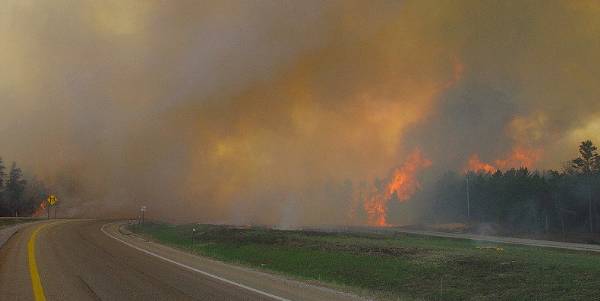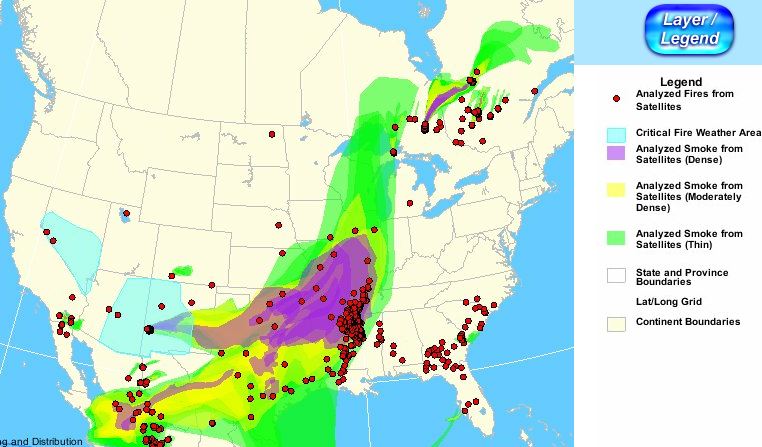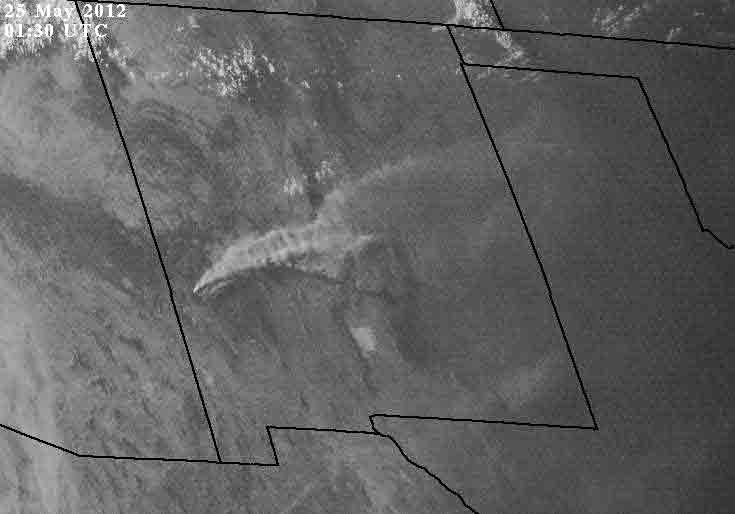
The Whitewater-Baldy fire in southwest New Mexico grew on Thursday to 82,252 acres. The Incident Management Team announced that 12 cabins have burned as well as 13 outbuildings. Below is an update provided by the IMTeam on InciWeb:
====================================================
Friday, May 25, 2012 – AM Update: The Whitewater-Baldy Complex grew yesterday to a total of 82,252 acres. Fire behavior was not as extreme as was observed the previous two days. The complex continues to burn in steep, rugged terrain consisting of mixed conifer and continues to be primarily wind and terrain driven. The Whitewater Fire merged with the Baldy Fire on Wednesday, May 23, causing suppression and incident management forces to combine into Whitewater-Baldy Complex.
The fire is currently burning on 3 Ranger Districts, the Glenwood, Reserve and Wilderness Ranger Districts along with an area of private land known as Willow Creek Subdivision. Twelve cabins have been confirmed as lost in this subdivision along with 13 out-buildings. There were NO additional structures lost in the last 24 hours in the Willow Creek Subdivision. Personnel from New Mexico State Forestry and U.S. Forest made all necessary contacts with effected landowners yesterday. Structural protection and damage assessment continue in Willow Creek and structure protection assessments were also initiated in the village of Mogollon.
Due to extreme fire behavior, proximity to private land, and continued high winds forecasted, Tony Sciacca’s Southwest Type 1 Fire Management Team was ordered and arrived in Reserve yesterday. They will assume command of the complex on Saturday morning.
The complex remains at 0% containment as firefighters are unable to directly suppress the fire due to extreme fire behavior and rough terrain. They were, however, able to directly and successfully attack a few spot fires out ahead of the fire on the north end. Crews will continue their hard work today in preparing fire lines across and along the Mineral Creek drainage. Indirect fire line was constructed to the north from Bursum Road to Log Canyon trail connecting to a jeep trail.
Winds are predicted to continue to challenge fire fighters today and tomorrow, shifting from a southwesterly wind to more of a southern wind. Firefighters will be carefully monitoring winds as they continue their efforts. Smoke impacts continue to be substantial in communities to the east and northeast of the complex. A voluntary-evacuation of the town of Mogollon continues to be in effect. Approximately 506 personnel are currently assigned to the fire.
See the latest update on the Whitewater-Baldy fire, dated May 27, 2012.








